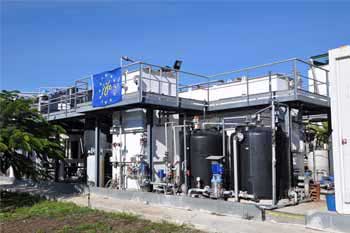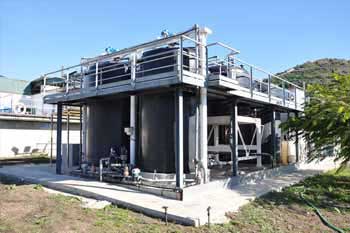Reduction of the environmental impact of sewage treatment
New technologies in development are focused on increasing sustainability in the cleaning sectorGuest post written by Teresa de la Torre García from ACCIONA Agua
Due to the growing concern over climate change, there is an ever-greater awareness with respect to greenhouse gas (GHG) emissions – mainly carbon dioxide (CO2), methane (CH4) and nitrous oxide (N2O). Although the best known of these is CO2, generally associated with electricity consumption, these three gases are all also produced during sewage treatment.
Direct, as well as indirect, emissions of CO2 and N2O to the atmosphere are produced in a Waste Water Treatment Plant (WWTP) during the biological processes to eliminate organic material and nitrogen. Methane is mainly generated in the water distribution networks and in sludge treatment. During the sewage water treatment itself, CO2 and N2O are the main GHGs generated.

N2O emissions are an emerging problem, given that sewage represents the sixth biggest contributor to N2O emissions worldwide, reaching 3% of the total N2O emitted. N2O emissions from WWTPs contribute 26% of the carbon footprint for the whole water cycle.
Apart from the impact on the atmosphere, WWTPs also represent an impact on receiving waters. WWTPs are generally designed to eliminate organic material, suspended solids, nitrogen and phosphorous, thus minimizing their impact. There are, however, recalcitrant substances that are not eliminated efficiently in conventional treatment processes.
These substances, known as emerging pollutants, include anything from medicines to personal hygiene products and nano-materials, and can reach receiving waters in significant quantities. The nature of these emerging pollutants depends largely on human activities and their appearance is not restricted therefore to any particular geographical area.
Although it has been observed that these compounds can negatively affect aquatic ecosystems, studies on water distribution networks have not been able to demonstrate any adverse effect on human health.
HOW TO MITIGATE THE ENVIRONMENTAL IMPACT OF THE WASTE WATER TREATMENT PROCESS?
The LIFE-BRAINYMEM research project led by ACCIONA Agua is supported and financed by the European Commission within the LIFE programme and aims to reduce energy consumption in treatment plants and minimize their environmental impact.
The work during BRAINYMEM consists of reducing both GHG emissions to the atmosphere and emergent pollutants in the water, significantly mitigating the environmental impact of the plants. To achieve this objective, the following actions are carried out:
Control of both the aeration supplied to the membranes and the aeration of the biological tanks, using an advanced control system permitting lower air consumption (energy consumption) as well as cutting down on the generation of GH gases (NOx and CO2).
Better elimination of emergent pollutants and, when necessary, sludge filterability by adding substances to the activated sludge through automatically controlled dosing.
Transfer of the knowledge acquired to the different interested bodies by specific dissemination actions and communication strategies, as well as making recommendations to the competent authorities.
The project is being carried out at the WWTP demonstration plant in Almuñécar (Granada, Spain), which was designed and built by the R&D&I department at ACCIONA Agua and serves as a platform for the study of different sewage water regeneration technologies.
demonstration plant in Almuñécar (Granada, Spain), which was designed and built by the R&D&I department at ACCIONA Agua and serves as a platform for the study of different sewage water regeneration technologies.
In this way, the BRAINYMEM project is about environmentally improving waste water treatment plants, which will help them comply with European climate change strategies and the Water Framework Directive for water quality protection.
The advanced control system at the demonstration plant was commissioned in mid-February 2015. Progress can be followed on the project website at: www.life-brainymem.com
The aim of ACCIONA Agua’s energy optimization R&D&I projects is to reduce both costs and environmental impact. The final objective will be to create a self-sufficient treatment plant where the energy required for the plant is produced in the plant itself via the obtainment of biogas or other renewable energies. In this regard, the new technologies being developed are aimed at increasing sustainability in the water treatment sector.
Teresa de la Torre García
R&D Project manager
ACCIONA Agua
Twitter profile: @teresoidetron







